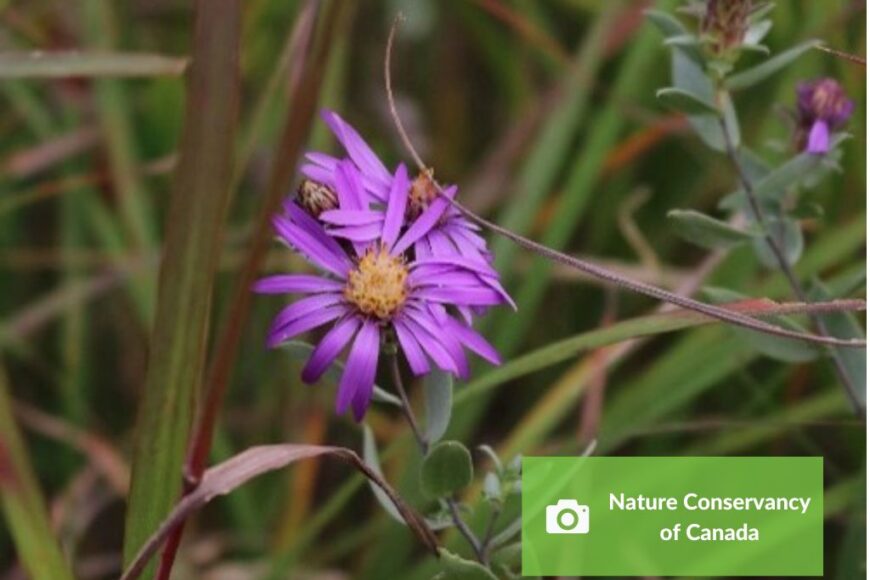Dawson Trail Dispatch, written by Norm Gregoire, July 2023
Page 9 https://issuu.com/dispatch222/docs/dawson_trail_dispatch_july_2023
When July begins on the tall-grass prairie, we are reminded of the incredible diversity of flora and beauty that we live among. At this time of year, it seems we are welcoming new species every day, and they appear in every colour imaginable. These prairie beauties are also tough, but some rely on the conservation work being implemented in Manitoba’s tall-grass prairie in order to have a place to survive. Western silvery aster are a species that fits perfectly into this description: beautiful, tough, but needing some help in order to keep surviving.
There are many aster and aster look-alike species that are found in Manitoba. Although they can be tricky to identify, I find that the western silvery aster stands out. Western silvery aster are perennials that may grow over thirty centimetres in height. A plant typically has no more than ten purple flowers, though on occasion it may have as many as sixty that bloom by the beginning of September. The flowers are arranged on sparsely branched stems. Leaves are thin and lance-like, and a key identifier is that when observed closely, many silvery hairs can be seen.
Like many prairie species, western silvery aster are resilient plants. Their woody rootstock has evolved to survive Manitoba’s harsh climate, coping with everything from drought, wildfires, and cold temperatures in the winter. I am often surprised to see the western silvery aster grow in what I would have assumed to be less than ideal habitat. In Manitoba, western silvery aster are found in prairie areas where the soil is calcium-rich and generally gravelly, occasionally growing in the thin soil of the Canadian Shield. Thriving in a gravelly habitat means the western silvery aster can be inadvertently destroyed during resource extraction or road maintenance.
The Committee on the Status of Endangered Wildlife in Canada lists the western silvery aster as threatened. Threats not only include resource extraction but also the encroachment of woody species, the invasion of non-native plants, and urbanization. Many conservation efforts are underway in the tall-grass prairie to help conserve western silvery aster in our province. This includes the Stewardship Credit Pilot Program (SCPP), a partnership between the Rural Municipality of Stuartburn and Nature Conservancy Canada.
As part of SCPP, participants receive annual payments to reward and assist in management, such as brush and invasive species control and the improvement of native prairie, with a focus on species at risk. Given the conservation status of the western silvery aster and the rarity of the habitat it relies on, the western silvery aster is one of the three target species of the program. Through the program, participants can learn about the plant, its management, habitat, indicator species, and more. Further, participants with the western silvery aster may be eligible for additional payments through the program in an effort to further conserve and protect the species. Private landowners are vital for the success of this at-risk species, as there are no records of it being found in the Tallgrass Prairie Preserve or any other conservation land.
If you think you may have western silvery aster or native prairie and are interested in learning more about the program (or both!), we would love to hear from you.
For more information, please contact Norm Gregoire, Stewardship Credit Pilot Program Liaison and Community Liaison for Species at Risk, at info@sharedlegacymb.ca or 204-408-6166.

